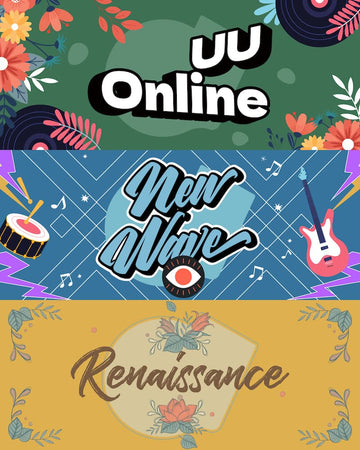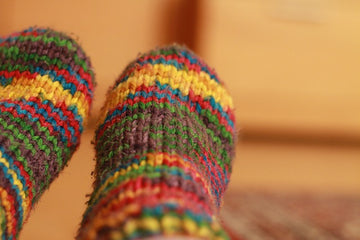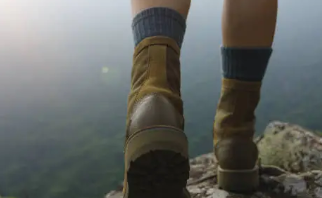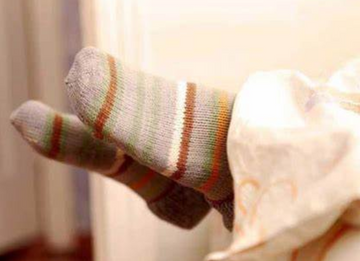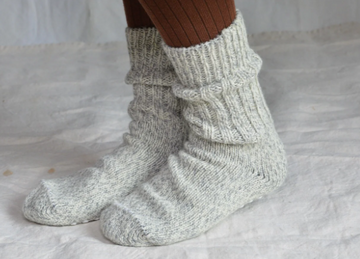
Socks are a seemingly simple article of clothing, but they play a vital role in our daily lives. From keeping our feet comfortable and healthy to adding a touch of style, socks offer a surprising number of benefits. This article explores the various reasons why we wear socks, from the practical to the fashionable. We'll delve into how socks protect our feet, regulate temperature, and wick away moisture. We'll also explore the history of socks, from their ancient origins to the diverse types available today.
Why Do We Wear Socks
We wear socks for a bunch of reasons, mostly related to keeping our feet happy and healthy.
- Comfort and Moisture Management
ur feet sweat, and socks absorb that moisture, keeping our feet dry and preventing them from getting uncomfortable and slippery. This is especially important in shoes, where sweat can build up quickly.
- Protection
Socks act as a barrier between our feet and the world. They protect our feet from dirt, dust, blisters, and even germs that might be lurking on the ground or inside shoes.
- Temperature Regulation
Socks can actually help keep our feet both warm and cool. In cold weather, they provide extra insulation. In hot weather, they can help wick away sweat, which has a cooling effect.
- Foot Health
By reducing friction, absorbing moisture, and keeping feet protected, socks can help prevent foot problems like blisters, athlete's foot, and other fungal infections.
- Fashion
Socks can also be a fashion statement! There are all sorts of styles, colors, and patterns to choose from, so you can find socks that match your outfit or express your personality.
Types of Socks Popular Today
Besides the functionalities to consider when choosing socks, there are also various popular types for different occasions:
Athletic Socks
These are the most popular socks today, designed for sports and various casual activities. They come in different heights (ankle, crew, knee-high) and prioritize features like moisture-wicking materials, breathability, and cushioning for comfort during movement.
Ankle Socks
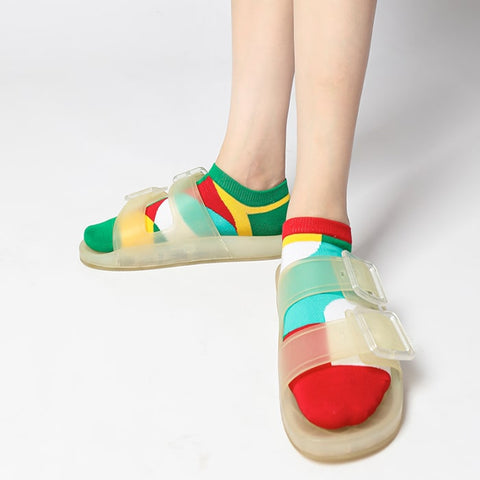
A favorite for everyday wear with loafers, sneakers, or low-cut shoes. They provide a touch of coverage and prevent blisters but remain invisible most of the time.
Crew Socks

These mid-calf socks are versatile and work well with sneakers, boots, or high-top shoes. They offer more coverage and warmth than ankle socks.
No-Show Socks
Perfect for low-cut shoes where you don't want any socks to be seen. They come in liner styles for minimal coverage or with silicone grips to prevent them from slipping off.
Dress Socks
Made from finer materials like silk or Supima cotton, these dress socks are designed to be worn with dress shoes and formal attire. They are typically crew-length and come in solid colors or subtle patterns.
Knee-High Socks

Offer warmth, protection, and a touch of style. Popular with cyclists, skaters, and for those who just prefer extra leg coverage.
Compression Socks
Designed to increase blood circulation and reduce fatigue and swelling. They come in various lengths and are worn for athletic performance, recovery, or by people prone to leg swelling.
Why Is a Sock Called a Sock?
The word "sock" has a long history that traces back to footwear.
Old English "socc": This term referred to a light slipper, very similar to the function of a modern sock. This word laid the groundwork for the modern term "sock."
Latin "soccus": Even further back, the Latin language had the word "soccus" which described a light, low-heeled shoe worn by Roman comic actors. The Old English term likely borrowed its meaning and sound from this Latin word.
So, the word "sock" ultimately comes from a term for a type of light footwear, which makes perfect sense considering its function on our feet!
Is It Ok to Not Wear Socks?
While going sockless isn't inherently bad, it's important to prioritize foot health and hygiene. Consider the material of your shoes, the climate, and your activity level before making the choice.
- Foot Health
Your main concern is moisture buildup. Without socks, sweat gets absorbed directly by your shoes, creating a breeding ground for bacteria and fungus. This can lead to unpleasant odors, athlete's foot, and even toenail fungus.
- Material Matters
The breathability of your shoes plays a big role. Leather shoes tend to trap moisture more than canvas sneakers. If you do go sockless, choose shoes made from breathable materials like canvas or mesh.
- Climate and Activity Level
In hot weather or during strenuous activity, sweat production increases. Socks can help wick away moisture and keep your feet drier. In cooler weather with low activity, going sockless might be okay.
- Fashion and Personal Preference
Ultimately, sockless footwear can be a fashion choice, especially with certain styles like loafers or boat shoes. As long as you practice good foot hygiene and your shoes are breathable, it can be acceptable.
When Did Humans Start Wearing Socks?
There's evidence of people using foot coverings as far back as the Stone Age, around 5000 BC! These early socks were likely made from animal skins or plant materials and wouldn't look much like the ones we wear today.
The Egyptians are credited with creating the first recognizable socks around 300-500 AD. These were knitted socks, with a unique design that had a split toe. Romans also wore foot coverings made of leather or woven fabrics, and later developed fitted socks by sewing the fabrics together.
What Was Worn Before Socks?
Before socks became widely available, people commonly used footwraps to protect their feet. Due to the time-consuming nature of sock production in pre-industrial times, socks were initially a luxury item only affordable to the wealthy. For the less affluent, simple cloths were wrapped around the feet, a practice that persisted in Eastern European armies until the late 20th century.
Should You Sleep with Socks Off?
The decision of whether or not to sleep with socks comes down to personal preference. If you tend to have cold feet or experience any of the benefits listed above, socks might be a good choice. However, if you sleep hot or find socks uncomfortable, then skipping them is perfectly fine.
Pros of Sleeping with Socks
Improved sleep: Warmer feet can lead to faster sleep onset, longer sleep duration, and fewer nighttime awakenings due to temperature fluctuations.
Better circulation: For people with poor circulation or Raynaud's disease, socks can improve blood flow to the feet and ease discomfort.
Moisturizing: Wearing cotton socks after applying lotion can trap moisture and prevent dry, cracked heels.
Hot flashes: Some women experiencing hot flashes find socks help cool their core body temperature.
Cons of Sleeping with Socks
Overheating: For those who already sleep hot, socks can trap heat and make sleep uncomfortable.
Material irritation: Synthetic materials can cause sweaty or itchy feet. Opt for breathable, natural fibers like cotton.
Tight socks: Can restrict blood flow, so choose loose-fitting socks for comfort.
How Long Is It Ok to Wear Socks?
In most cases, it's best to change your socks daily. This is especially true if you're active, sweat a lot, or wear closed-toe shoes. Fresh socks help prevent odor, moisture buildup, and the growth of fungus that causes athlete's foot.
What Country Invented Socks?
While the exact invention of socks is a bit fuzzy, the evidence points to the Ancient Egyptians as the first to create socks around 300-500 AD. These early socks were knitted and designed with a separated big toe, likely for use with sandals.
It's interesting to note that there's also evidence of knitted footwear found in Jutland dating back to 1500 BC. However, the Egyptian tomb discovery suggests socks may have been in use there even earlier.
Why Not Wear Double Socks?
Double socks can trap sweat. This is because they create more layers that moisture needs to wick through. Trapped sweat can lead to discomfort, odor, and even increase the risk of athlete's foot.
Two pairs of socks can make your shoes feel too bulky and tight. This can be uncomfortable and restrict blood circulation in your feet.
Multiple layers can reduce breathability, making your feet hotter. This can be especially problematic in warm weather or during physical activity.
Who Invented Socks First?
Based on archaeological evidence, the credit for creating the earliest recognizable socks goes to the Ancient Egyptians around 300-500 AD.
These Egyptian socks were unique with a separated big toe, designed for use with sandals. While there's evidence of knitted footwear even earlier (around 1500 BC) in Jutland, the Egyptian discovery suggests socks might have been in use there even before that.
Final Words
Socks are more than just foot coverings; they're essential for maintaining healthy and happy feet. Whether you choose them for comfort, protection, or style, there's a perfect sock out there for everyone. So next time you slip on a pair of socks, take a moment to appreciate these unsung heroes of everyday life.
Read More:
Why Do We Wear Socks
Do You Wear Socks with Climbing Shoes
What Color Socks with Brown Shoes
What Socks to Wear with Loafers
What are Grip Socks
